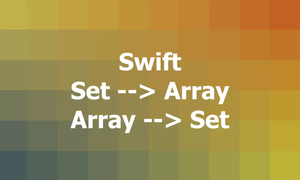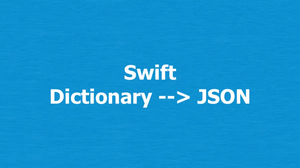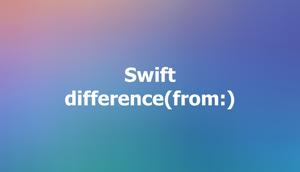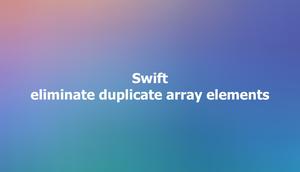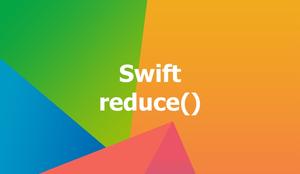This succinct, practical article covers everything you need to know about array slicing in Swift.
What is array slicing and why do we need it?
Array slicing is an operation in which a portion of an array, known as a slice, is extracted based on specified criteria. Slicing is a powerful tool that allows you to access, modify, or analyze specific elements within an array without having to iterate through the entire array. In Swift, slices are represented by the ArraySlice type, which is a lightweight view of a contiguous segment of an array.
The primary purpose of array slicing in Swift is to enable efficient manipulation of data within an array. By using slices, you can perform operations on specific sections of an array without having to create a new array. This can lead to significant performance improvements, especially when working with large datasets.
Basic slicing operations on arrays
Using the range operator [start…end]
In Swift, the syntax for slicing an array is similar to that of other programming languages. You use square brackets [start…end] to specify a range of indices within the array. The start and end indices are inclusive, meaning that the elements at these positions are included in the slice. Here’s a very basic example:
let numbers = [1, 2, 3, 4, 5]
let slice = numbers[1 ... 3]
print(slice)
// Output: [2, 3, 4]In this example, we create a slice of the numbers array that includes the elements at indices 1, 2, and 3. The resulting slice contains the values [2, 3, 4].
It’s important to note that the ArraySlice type is a view of the original array, meaning that it does not create a new array. Instead, it references the underlying elements in the original array. This makes slicing operations highly efficient in terms of memory usage.
Using half-open range operator [start..<end]
You can also use the half-open range operator [start..<end], which includes the start index but excludes the end index:
let numbers = [1, 2, 3, 4, 5]
let slice = numbers[1 ..< 3]
print(slice)
// Output: [2, 3]In this example, the resulting slice contains the values [2, 3], as the element at index 3 is excluded from the slice.
Using one-sided range operator [start…]
Another useful slicing operation is the one-sided range operator [start…], which includes all elements from the start index to the end of the array:
let numbers = [1, 2, 3, 4, 5]
let slice = numbers[2...]
print(slice)
// Output: [3, 4, 5]Advanced array slicing techniques in Swift
Swift offers some advanced slicing techniques that can help you manipulate arrays more efficiently. One such technique is the use of higher-order functions, such as map(), filter(), and reduce(), to perform operations on slices.
For example, you can use filter() to create a new slice containing only the elements that meet a specific condition:
let numbers = [1, 2, 3, 4, 5]
// create a new slice that contains only the even numbers from the original arra
let evenNumbers = numbers.filter { $0 % 2 == 0 }
print(evenNumbers)
// Output: [2, 4]You can also use map() to apply a transformation to each element of a slice:
let numbers = [1, 2, 3, 4, 5]
let squaredNumbers = numbers.map { $0 * $0 }
print(squaredNumbers)
// Output: [1, 4, 9, 16, 25]Here, the map() is used to create a new slice containing the square of each element in the input array.
More Examples
Now that we have a firm understanding of the basics of array slicing in Swift, let’s explore some real-world examples to see how slicing can be used in practice.
Modifying sections of an array
Sometimes, you may need to modify specific sections of an array. For example, suppose you have an array of integers, and you want to increment the elements at indices 2 to 4 by 1. You can use array slicing to achieve this:
var numbers = [1, 2, 3, 4, 5, 6, 7]
// Or convert the array to a slice
numbers[2...4] = numbers[2...4].map { $0 + 1 }[...]
print(numbers)
// [1, 2, 4, 5, 6, 6, 7]In the code snippet above, we use the map() function to increment the elements in the specified range and then assign the resulting slice back to the original array.
Analyzing and processing array data
Array slicing can also be used to analyze and process data in an array. For example, suppose you have an array of sales data, and you want to find the average sales for the first quarter of the year. You can use array slicing to extract the relevant data and then use the reduce() function to calculate the average:
let salesData = [2000, 1500, 3000, 4000, 2500, 3500, 4500, 5000, 2000, 3500, 4000, 3000]
let firstQuarterSales = salesData[0 ... 2]
let averageSales = firstQuarterSales.reduce(0, +) / firstQuarterSales.count
print(averageSales)
// Output: 2166In this example, we use array slicing to extract the first three elements of the salesData array, which represent the sales for the first quarter of the year. We then use the reduce() function to calculate the sum of these values and divide by the number of elements to obtain the average sales.
Best Practices and performance considerations
While array slicing can be a powerful tool, it’s important to use it correctly to avoid common mistakes. Here are some best practices to keep in mind when slicing arrays in Swift:
- Be careful when modifying slices, as this can affect the underlying array.
- Avoid creating unnecessary slices, as this can lead to performance issues.
- Use higher-order functions, such as map, filter, and reduce, to perform operations on slices whenever possible, as these functions are highly optimized for performance.
When working with large datasets, performance can be a critical consideration when using array slicing in Swift. Here are some tips to help you optimize the performance of your slicing operations:
- Use the half-open range operator [start..<end] instead of the closed range operator [start…end] whenever possible, as this can reduce the number of elements in the resulting slice.
- Try to perform operations on slices in a single pass, as this can reduce the number of iterations required.
- Avoid using nested slicing operations, as this can lead to unnecessary memory allocation and decreased performance.
Conclusion
In this comprehensive tutorial, we have explored the world of array slicing in Swift, discussing its purpose, syntax, usage, and methods. We have also provided real-world examples and best practices to help you better understand how to effectively use slicing in your projects. By mastering array slicing in Swift, you can improve the efficiency and performance of your code, leading to faster and more reliable iOS apps (and other kinds of apps, of course). Happy coding & good luck!
